What sits beside me as I type out the articles you all surely love and adore?
A firearm, sitting on my waist in its holster.

I write at home most often and for tax purposes 100% of the time. So why do I need to carry a firearm in my home?
Because when stuff hits the fan, I like to be ready. If a home invasion should occur, I have a gun immediately on hand to defend myself.
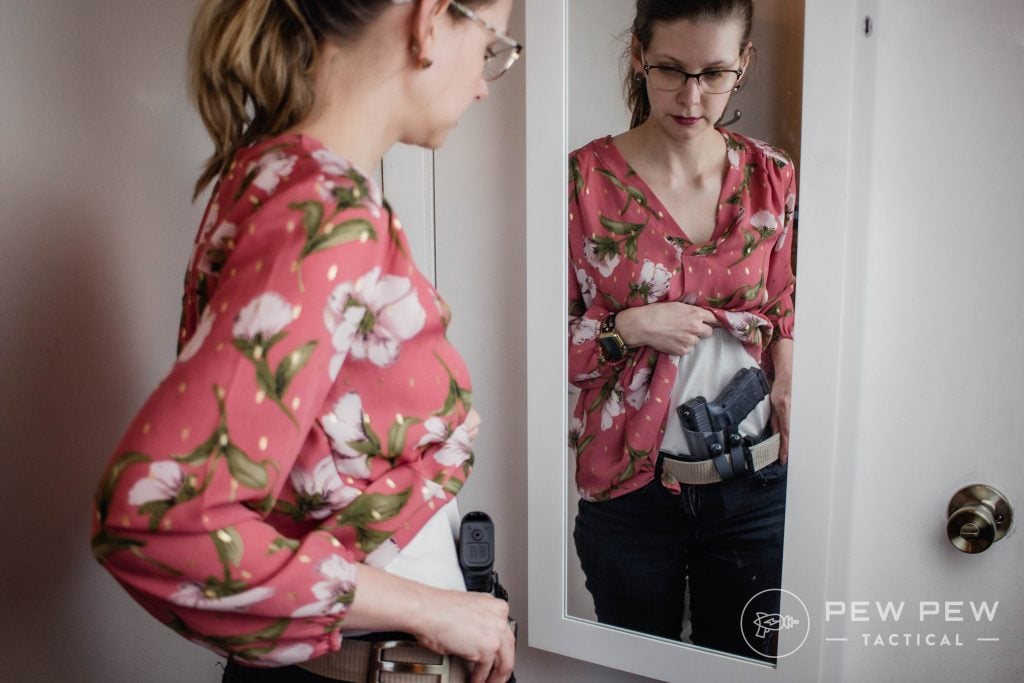
Home invasions are a terrifying prospect.
Violence outside the home we can deal with and prepare for. However, violence inside the home, the place where you sleep and should feel safe, is absolutely terrifying.
It destroys our primal feeling of safety and shelter. But once you admit it can happen, you can better prepare.

With that said, let’s explore how we can survive a home invasion. We’ll lay out some stats, tell you what gear you’ll need, and explore the tactics behind staying alive.
Table of Contents
Loading…
Home Invasions in the U.S: The Stats
Good news, bad news time.
The good news is America is a great country filled with great people. We are generous, kind, and law-abiding people who do our best to help neighbors and serve our communities.
The bad news…not everyone feels that way. A very small group of people like to exploit and harm others.

According to a report published by the United States Department of Justice, roughly 1 million home invasions happen per year.
For 2021, the FBI Uniform Crime Report showed over 619,000 burglaries but noted a 31% drop.
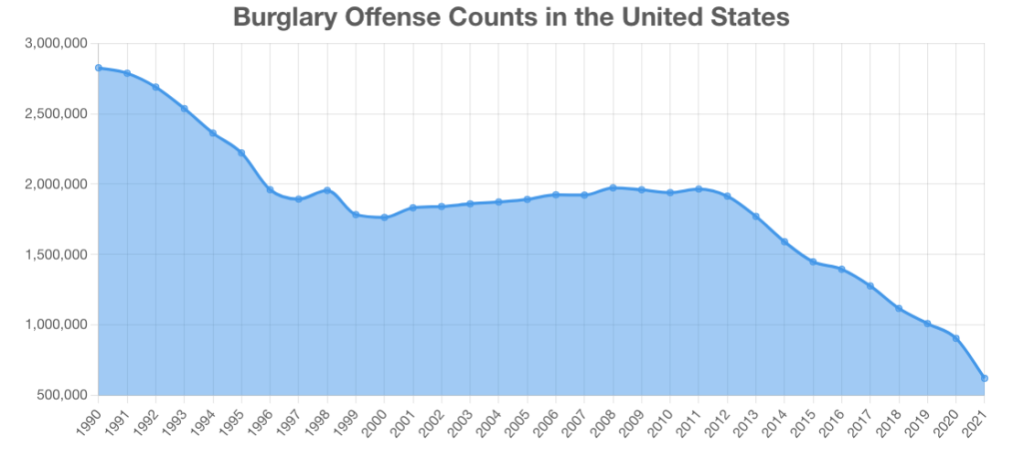
But what constitutes a home invasion?
“’Home invasion’ has been used broadly to describe any crime committed by an individual unlawfully entering a residence while someone is home. More narrowly, home invasion has been used to describe a situation where an offender forcibly enters an occupied residence with the specific intent of robbing or violently harming those inside,” a special report by the Department of Justice concluded.
The DOJ report shows simple assault was the most common form of violence during home invasions. Robbery and rape were the second and third most common crimes during home invasions.

61% of home invasions involved an unarmed person, while 12% of home invasions involved an invader armed with a firearm.
Now that we know what a home invasion is and some of the facts behind home invasions, we can start talking about how to survive one.
How to Survive a Home Invasion
1. Have a Plan
General James “Mad Dog” Mattis once said, “Engage your brain before you engage your weapon.” Having a plan is just as important, if not more important, than a firearm.
A thought-out plan goes beyond you, though, and should involve your entire family or the entirety of everyone in the home.

Your plan should be personal and address your specific situation, your house, family, etc.
First, every adult needs a job. That could be retrieving a weapon, calling 911, or gathering others together.
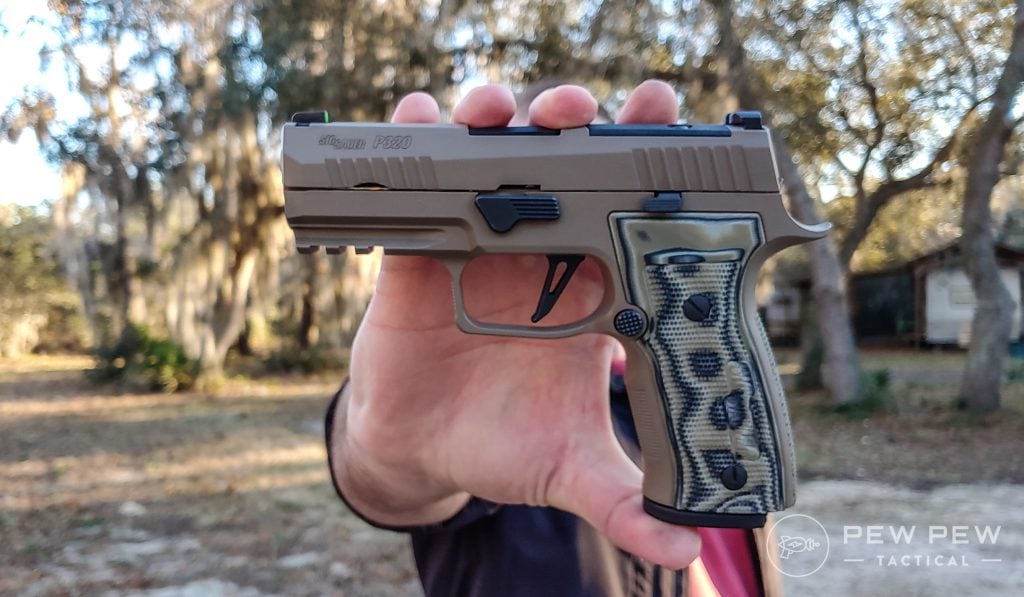
You want everyone in the same area, not spread throughout your home. Everyone should gather in one room together if possible.
Having everyone together allows you to engage a threat if necessary, without worrying about accidentally harming a family member. Establish a code word that can be shouted and passed on from person to person.

When one person shouts the word, everyone repeats it. This ensures everyone knows and everyone hears the code word that signals danger.
The code word should create actions. Adults get on their dedicated tasks, and everyone else makes their way to the designated gathering place.

The plan should be understood by all and even rehearsed on occasion to ensure everyone knows what to do.
For more on creating a family plan, check out the 5 Tips for a Family Defense Plan and Creating a Family Defense Plan.
2. Defense-in-Depth
Defense-in-depth is a concept that can apply to nearly anything worth defending. From your computer to a military base, the best defenses have depth to them.
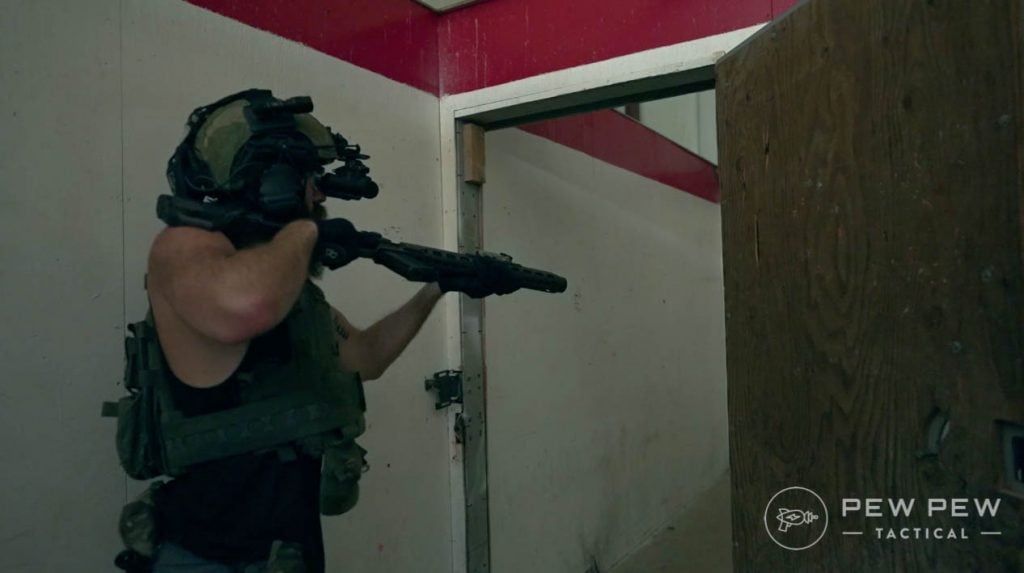
Depth means multiple layers working together to create a harder-to-penetrate environment.
From a home invasion perspective, no one wants to live in a prison with bars on the window. However, steps can be taken to create defense in depth around your home.
(We have some tips on fortifying your home against invaders.)
var PPT_APS = PPT_APS || {}; PPT_APS[71129] = { ‘id’: “71129”, ‘title’: “Ring 5-Piece Home Security System”, ‘img’: “https://www.pewpewtactical.com/wp-content/uploads/2021/03/Ring-Security-System-768×552.jpg”, ‘tag’: “”, ‘url’: “https://amzn.to/2PYEFL9”, };
Motion-activated lights, secure doors with strong locks, window security film, door alarms, and cameras turn a home into a virtual bunker.
I’ve become a big fan of Blink cameras and Ring home defense systems. The security systems are affordable and easy to set up, and widely available.
var PPT_APS = PPT_APS || {}; PPT_APS[71127] = { ‘id’: “71127”, ‘title’: “Blink Camera”, ‘img’: “https://www.pewpewtactical.com/wp-content/uploads/2021/03/Blink-Mini-768×768.jpg”, ‘tag’: “”, ‘url’: “https://amzn.to/30CGPSG”, };
Having a firearm at hand is also critical. But leaving one lying around loaded isn’t a safe option, especially with kids in the home.
A good, accessible safe for handguns, AR-15s and shotguns is essential.

Also, remember that loose lips sink ships. Watch your social media posts. Don’t advertise that new awesome TV or video game system. Don’t show entry doors, security systems, safe placement, etc.

Keep it quiet, and don’t make yourself a target.
To keep it on the down low, we suggest staging your guns in stealthy places or storing them hidden/concealment safes.
3. Designate a Safe Room
A key part of a successful plan is choosing a safe room. The safe room is a room everyone gathers in and lays low until the blue calvary arrives.
Centrally located should be the best way to describe a safe room. The room should be easy to access.

You also want a room that is easy to secure with a locked door.
There should be a means to escape the room and flee if necessary, as well. Personally, I’d keep a medical kit, a phone charger, and even an old cell phone stashed in the room.
Even without paid service, a phone can make emergency calls.

You may need to choose a safe room based on how your home is designed and your family’s situation. Sometimes that means a less-than-optimum room but one that is faster for everyone to reach and secure themselves in.
As part of my home defense plan, I situate myself between the threat and the room until I receive the all-clear that my family is in the safe room, then I join…late as usual.
4. Firearms & Training
Of course, I’m going to advise you to have a gun. A handgun on the belt is better than a long gun in the safe. But a long gun is much more potent than a handgun.
So, which gun is best for home defense? For the majority of people, an AR-15 makes for a better home defense gun.
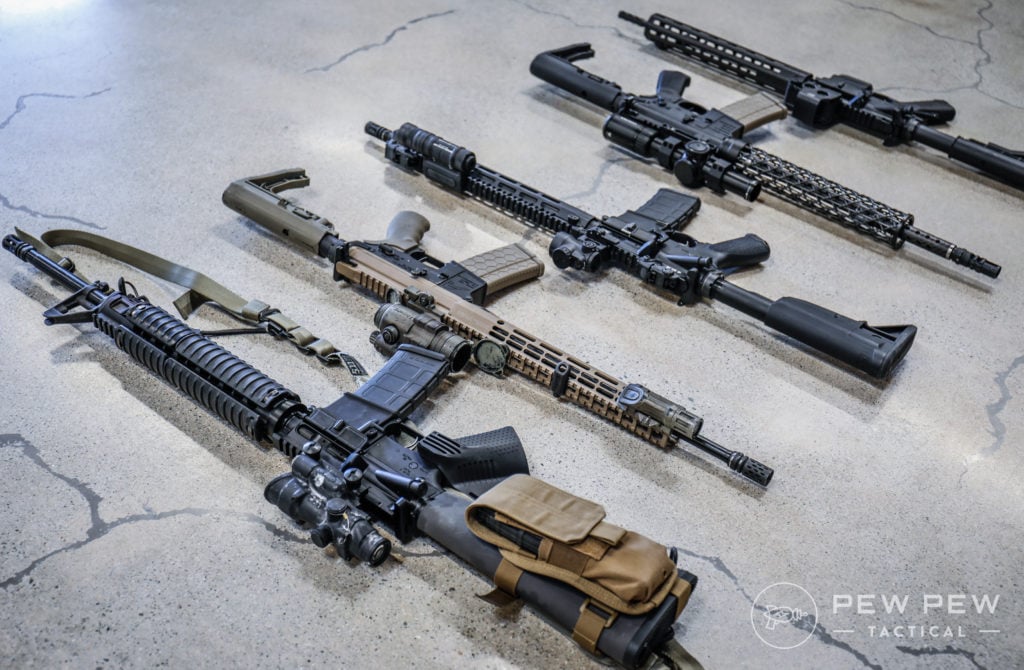
Lightweight, easy to handle, accurate, reliable, and when loaded with the right ammo, an AR-15 is less likely to over-penetrate drywall. That said, any gun is better than no gun. If you have a personal preference, then stick to what you know.
On top of the gun, I’d suggest a white light and a red dot.
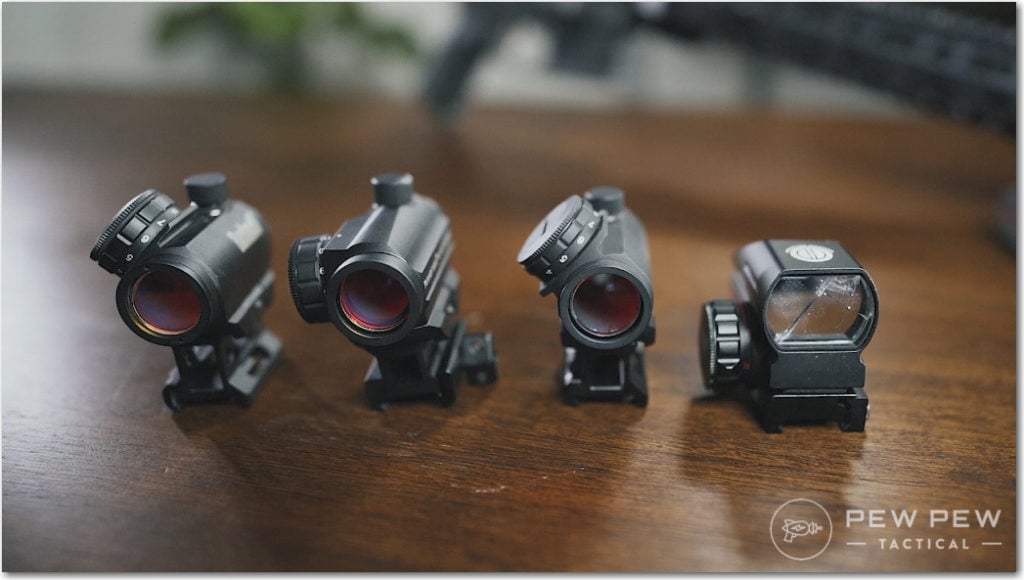
Both allow you to accurately aim and identify threats when the power’s out, and the sun goes down. On top of owning a firearm, you must be proficient in its use.
Jeff Cooper once said, “Owning a handgun doesn’t make you armed any more than owning a guitar makes you a musician.”

And he’s right.
Get training, practice often, and seek professional aid. A good handgun, carbine, or shotgun class will make you much better prepared to deal with a threat.
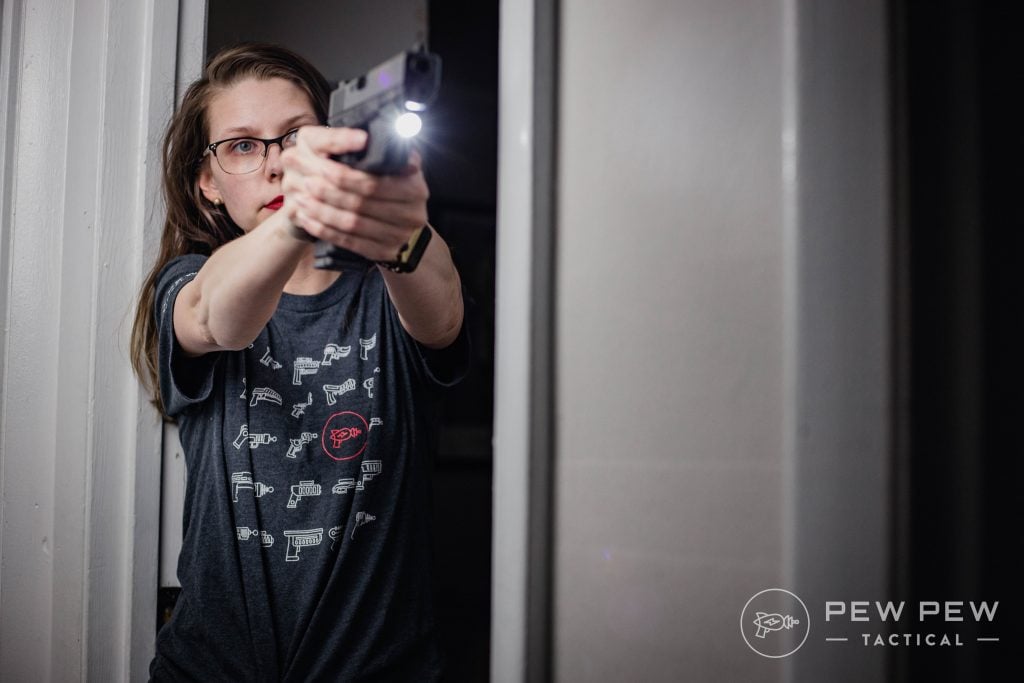
Also, we suggest investing in a first aid class as well. Should things get bad, it’s good to know how to treat wounds until help arrives.
5. Use the Room
As someone who has cleared rooms in a non-permissive environment, I can tell you it’s not easy. When a trained and well-armed home defender uses their home to their advantage, the threat is put at an immediate disadvantage.
So, use your home to your advantage. In room clearing, we establish that the fatal funnel is a narrow, confining area that offers little to no cover. It often acts as a chokepoint.
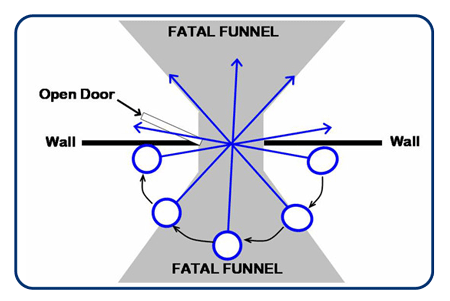
A doorway is a good example of a fatal funnel and a great way to hold a room. Position yourself in a corner opposite the door and orient your firearm at the door.
If the home invaders make it into that room, you’ll be able to quickly decide whether to shoot or not shoot.

You can hold the room and kill the momentum of the threat instantly by controlling the room. Never leave the room, not until the police arrive and the house is secure.
Ensure that you inform the police you are armed and advise them what room you are in. When the police call out, reply and let them know where you are.
Final Thoughts
Home invasions are a terrifying prospect, even for the most well-prepared and ready. But the more you plan and prepare, the better and quicker you’ll act in the moment – increasing your odds of survival.
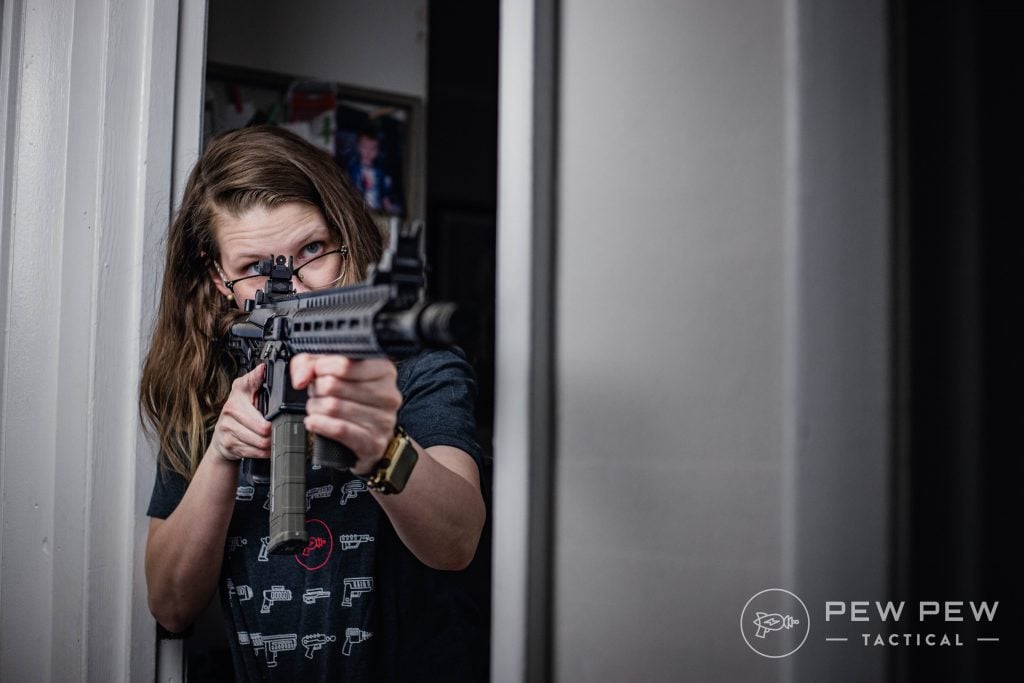
Though home invasions are seemingly rare crimes in the grand scheme of things, statistics are of cold comfort to those struck by lightning. I don’t play in lightning, and I’m prepared for a home invasion scenario.
For more tips on dealing with home invasions at night, check out the Brownells Daily Defense video below.
Do you have a plan? If you have some tips and tricks, please share them below. For more on home defense check out our guides on the Best Home Defense Gun [Shotgun vs Pistol vs Rifle].
The post How To Survive a Home Invasion appeared first on Pew Pew Tactical.

